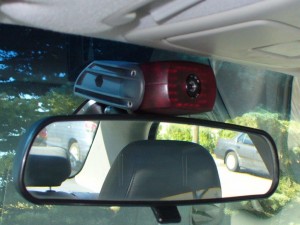Reducing Taxicab Homicides
Posted on by
Taxicab drivers face one of the highest homicide rates of any occupation. While rates of homicide have declined among the general working population (in 2010, 0.37 per 100,000 employed), they remain high in the taxicab industry (7.4 per 100,000 employed for the same year). In the early 1990s, bullet-resistant partitions were the dominant safety equipment in use in taxicabs. Currently, cameras are in greater use and have become the security equipment of choice for industry regulators and taxicab fleet operators.
New research from NIOSH examines the effectiveness of partitions and security cameras in reducing homicides among taxicab drivers. This is the first study to methodically collect data from a nationally representative sample of the largest taxicab cities. Data was collected over a 15-year time span (1996-2010) for 26 cities (8 cities using security cameras, 7 cities using partitions, and 11 control cities that used neither cameras nor partitions) and allows for comparison of homicide rates pre- and post-installation of cameras. The study was published in the American Journal of Preventive Medicine.
The study found a three times lower homicide rate in the cities where taxicabs use security cameras than the control cities and a seven times lower homicide rate when compared to the rates before installation of the cameras. There was no statistically significant difference in homicide rates for cities where the taxicabs used partitions compared with control cities.
During the 15-year study period, news clippings identified 216 taxicab driver homicides in the 26 cities included in the analysis. The average number of taxicab driver homicides was 14 per year, with the minimum being three homicides (2007) and the maximum 24 (1997, 1998).
The data suggest that citywide installation of security cameras in taxicabs may result in a sustainable reduction of the homicide rate among taxicab drivers. However, cameras are effective to the extent that they are used to their optimal performance and publicized. The ordinance requirements in some cities mandate that a decal be posted on the passenger windows to make passengers aware that they are under surveillance thereby deterring would-be perpetrators.
Another crucial component to ensure optimal performance of security cameras is maintaining cameras according to manufacturer’s instructions and not allowing security cameras to be intentionally disabled. Security cameras mandated by ordinance are checked for functioning at yearly inspections organized by city regulators, if not more frequently, when taxicab vehicles are checked for safety.
All six taxicab driver homicides that occurred post-camera installation took place in cities where cameras are required by company policy instead of by city ordinance. Although company policies for security camera installation may be effective, municipal ordinances requiring that all taxicabs be equipped with operating security cameras may be more effective. Such ordinances would ensure that individual owner–operated taxicabs and smaller businesses would use cameras, as do the nationally recognized taxicab companies that make up a large share of the market.
Current research is planned to evaluate the effect of cameras and other safety measures in reducing robbery and assault rates by interviewing individual drivers.
We would like to thank the International Association of Transportation Regulators (IATR) for their partnership in this considerable endeavor. In particular, Craig Leisy, with the Consumer Affairs Unit in Seattle, WA, provided several invaluable critical reviews of the study during the proposal and writing phases. Malachi Hull and Matt Daus, Presidents of IATR, and Karen Cameron were crucial for building partnerships with municipal agencies. The authors also express gratitude to Charles Rathbone, taxicab driver and assistant fleet manager who maintains the Taxi Library website, who was the inspiration for this study.
Cammie Chaumont Menéndez, PhD, MPH, MS
Dr. Chaumont Menéndez is an Epidemiologist in the NIOSH Division of Safety Research.
Posted on by

